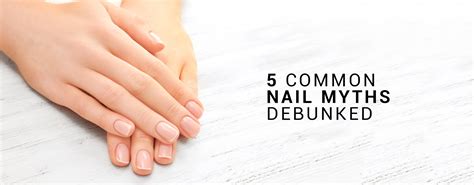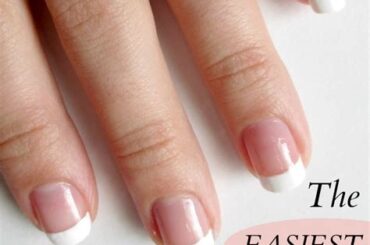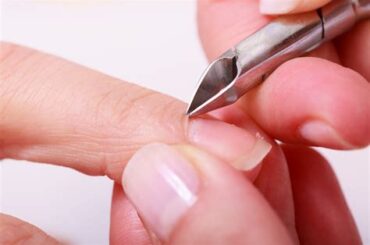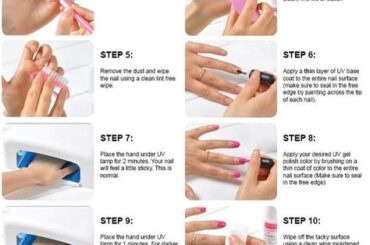Discover the truth about nail health and debunk common myths. Learn how to care for your nails for optimal health and appearance.
Myth 1: Nail Health Equals Overall Health
Many people believe that the appearance and condition of their nails are direct reflections of their overall health. It is a common myth that healthy nails mean a healthy body. However, this is not entirely true. While changes in nail appearance can sometimes indicate underlying health issues, it is not always the case. Nail health is influenced by a variety of factors, including genetics, lifestyle, and environmental factors. It is important to understand that nail health is not the sole indicator of overall health, and other factors should be taken into consideration.
Despite the popular belief, nails are not able to breathe like our skin does. This is another common misconception about nail health. Nails do not require oxygen or air in the same way that our lungs do. Nails receive their nutrients and oxygen through the blood flow to the nail bed, not from the outside environment. Therefore, the idea that nails need to breathe is indeed a myth. Nails do not need to be left bare in order to maintain their health.
It is important to debunk these myths in order to have a better understanding of nail health. Rather than relying solely on the appearance of the nails to determine overall health, it is important to consider other factors as well. By debunking these myths, individuals can make informed choices about how to care for their nails and prioritize overall health in a more holistic manner.
Myth 2: Nails Need to ‘Breathe’
Myth 2: Nails Need to ‘Breathe’
One of the most common myths about nail health is the belief that nails need to breathe. Many people think that nail polish and acrylics suffocate the nails, leading to damage and discoloration. However, this is not entirely true. Nails are actually made up of non-living keratin protein, and they do not require oxygen in the same way that our skin does. The belief that nails need to breathe is a misconception that has been perpetuated for years.
It’s important to understand that the health of your nails is more about the health of the nail bed and the surrounding skin, rather than the nails themselves. Proper nail care, including keeping the cuticles moisturized and maintaining cleanliness, is essential for overall nail health. Contrary to popular belief, allowing your nails to go without polish for extended periods of time will not necessarily make them healthier. In fact, nail polishes and treatments can provide protection and prevent breakage, which can actually contribute to healthier nails in the long run.
So, don’t feel guilty about applying that fresh coat of nail polish or getting a set of acrylic nails. As long as you are practicing good hygiene and taking care of the nail bed, your nails will remain healthy and strong, regardless of whether or not they are able to breathe.
Myth 3: White Spots Indicate Calcium Deficiency
Myth 3: White Spots Indicate Calcium Deficiency
Many people believe that the presence of white spots on the nails is a clear indication of calcium deficiency in the body. However, this is just a common myth that has been circulating for years. In reality, white spots on the nails are usually caused by minor injuries to the nail bed, such as banging your finger against something or overly aggressive manicuring. These spots, also known as leukonychia, are not a reliable indicator of calcium levels in the body.
It is important for people to understand that the health of their nails is not always a direct reflection of their overall health. While it is true that certain nutritional deficiencies can manifest in the nails, such as a lack of iron or protein, white spots do not necessarily point to a lack of calcium. The body is a complex system and a variety of factors can contribute to the appearance of white spots on the nails.
Instead of jumping to conclusions about the cause of white spots on the nails, it is important to take a more holistic approach to health and consider other potential factors. If you are concerned about the health of your nails, it is always best to consult with a healthcare professional who can provide personalized guidance and advice.
Myth 4: Gel Manicures Ruin Nails
Gel manicures have become increasingly popular in recent years, with many women opting for this long-lasting and chip-resistant nail treatment. However, there is a common myth that gel manicures can ruin your nails. This myth has led to many people avoiding gel manicures out of fear of damaging their nails.
The truth is, gel manicures do not ruin the nails themselves. The damage often occurs during the removal process if it is not done properly. When gel polish is peeled off or picked at, it can take layers of the natural nail with it, leaving the nails weak and brittle. This is why it is important to have gel manicures removed by a professional using the correct techniques to minimize damage to the nails.
Additionally, it is essential to take breaks between gel manicures to allow the nails to recover and strengthen. By debunking the myth that gel manicures ruin nails, individuals can enjoy the benefits of this long-lasting nail treatment without fear of damaging their natural nails.
Myth 5: Cutting Cuticles is Necessary
Myth 5: Cutting Cuticles is Necessary
One common myth about nail health is the belief that cutting cuticles is necessary for maintaining healthy nails. Many people believe that cuticles should be trimmed to keep the nails looking neat and tidy. However, this is actually a misconception that can lead to damage and infection.
Contrary to popular belief, cuticles serve an important purpose in protecting the nails from bacteria and infection. They act as a barrier, preventing germs and debris from entering the nail bed. Cutting the cuticles can disrupt this barrier, leaving the nails vulnerable to infection. In addition, over-trimming the cuticles can lead to painful cuts and irritation, which can increase the risk of infection even further.
Instead of cutting the cuticles, it is important to gently push them back using a cuticle pusher or orange stick. This helps to keep the nails looking neat while preserving the protective barrier of the cuticles. In addition, regularly moisturizing the cuticles can help to keep them healthy and prevent them from becoming dry or cracked. By debunking the myth that cutting cuticles is necessary, individuals can prevent unnecessary damage to their nails and maintain overall nail health.
Truth 1: Indicators of Underlying Health Issues
Many people believe that the appearance of their nails is solely related to their nail health. However, nail health can actually be a reflection of underlying health issues in the body. For example, changes in nail color, shape, or texture can be indicators of various health problems, such as liver disease, heart conditions, or nutritional deficiencies. It’s important to pay attention to these changes and consult a medical professional for proper diagnosis.
Furthermore, nails receive nutrients through the blood flow to the nail bed. This means that the health of your nails can be affected by your overall circulation and the nutrients available in your bloodstream. Therefore, taking care of your overall health and well-being is essential for maintaining healthy nails.
Overall, it’s important to understand that while nail health is important, it is not isolated from the rest of your body’s health. Paying attention to changes in your nails can provide valuable insights into your overall health and well-being, making them important indicators of underlying health issues that should not be ignored.
Truth 2: Nails Receive Nutrients Through Blood Flow
Many people believe that the only way for nails to receive nutrients is through external products like nail oils and creams. However, the truth is that nails receive nutrients through blood flow. The nail plate is made up of layers of keratin, a protein that is produced by specialized cells in the nail bed. These cells receive their nutrients from the blood vessels that run underneath the nails, providing essential vitamins and minerals necessary for nail growth and strength.
It’s important to understand the vital role that proper blood circulation plays in maintaining healthy nails. Without adequate blood flow, the nail cells may not receive the necessary nutrients, leading to weak, brittle, or slow-growing nails. This is why overall vascular health is crucial in ensuring that nails receive the proper nourishment to stay strong and healthy.
So, instead of just focusing on external treatments, it’s important to also prioritize overall health and wellness to ensure that nails are receiving the essential nutrients they need to thrive. By maintaining good vascular health through a balanced diet, regular exercise, and proper hydration, you can support the natural growth and strength of your nails from the inside out.
Truth 3: White Spots Are Usually Minor Injuries
5 Common Myths About Nail Health Debunked
There is a widely believed myth that white spots on the nails indicate a calcium deficiency. However, the truth is that these white spots are usually a result of minor injuries to the nail bed. When the base of the nail gets injured, it can lead to the development of these white spots. It’s important to understand that these spots will grow out as the nail grows and are not necessarily a sign of a nutritional deficiency.
It’s important to debunk the myth surrounding white spots on nails to avoid unnecessary concern about a supposed calcium deficiency. Instead of worrying about the lack of nutrients in your diet, it’s more effective to focus on protecting your nails from injury and trauma. By taking proper care of your nails and avoiding excessive pressure or trauma, you can prevent the development of these white spots and maintain the overall health of your nails.
So, the next time you notice white spots on your nails, remember that they are usually just minor injuries and not a cause for worry about nutrient deficiencies. By understanding the truth about these white spots, you can avoid unnecessary concern and focus on maintaining the health and strength of your nails.
Truth 4: Proper Removal Prevents Damage
Properly removing nail polish and artificial nails is crucial in preventing damage to your natural nails. Many people believe that peeling off nail polish or pulling off artificial nails is harmless, but in reality, it can cause significant damage. When nail polish is peeled off, it can take layers of the nail with it, leading to thin, weak nails. Similarly, pulling off artificial nails can result in tearing and weakening of the natural nail.
Instead, proper removal involves using acetone-based nail polish remover for regular nail polish and soaking artificial nails in acetone to gently dissolve the adhesive. This allows the polish or artificial nails to be lifted off without causing harm to the natural nail. Additionally, using a moisturizing cuticle oil or cream after removal can help restore moisture and strength to the nail.
By following proper removal techniques, you can maintain the health and strength of your natural nails, preventing damage and promoting overall nail health.
Truth 5: Pushing Cuticles is Safer than Cutting
There is a common myth that cutting cuticles is necessary for healthy nails, but the truth is that pushing cuticles is actually much safer than cutting them. Cuticles act as a barrier to protect the nail matrix from bacteria, so cutting them can increase the risk of infection. Pushing the cuticles back gently with a cuticle pusher is a safer and more effective way to maintain nail health.
Many people believe that cutting the cuticles will make the nails look neater and help polish adhere better, but this is not the case. In fact, cutting the cuticles can cause the nails to become weak and brittle, leading to an increased risk of breakage and damage. Pushing the cuticles back gently is a much gentler way to keep them tidy without causing harm to the nails.
Ultimately, the myth that cutting cuticles is necessary for nail health has been debunked, and the truth is that pushing cuticles is a much safer and more effective way to maintain healthy nails. By avoiding the risk of infection and damage to the nails, it is clear that pushing cuticles is the better choice for overall nail health.
Frequently Asked Questions
What is the myth about nails and gel manicures?
The myth is that gel manicures weaken the nails. However, there is no scientific evidence to support this claim. In fact, with proper application and removal, gel manicures can actually help protect the nails from damage.
Is it true that white spots on nails indicate a calcium deficiency?
No, this is a common myth. White spots on nails are usually caused by minor trauma or injury to the nail, and are not necessarily a sign of a calcium deficiency.
Can nail polish cause yellowing of nails?
Yes, leaving nail polish on for an extended period of time can cause nails to yellow. It is important to give your nails a break from nail polish and use a base coat to prevent staining.
Is it true that cutting the cuticles makes nails healthier?
No, cutting the cuticles can actually increase the risk of infection and damage to the nails. It is best to gently push back the cuticles and moisturize them regularly.
Do vitamins and supplements improve nail health?
Vitamins and supplements can help improve nail health, especially if there is a deficiency. Biotin, in particular, is known to promote healthy nails. However, it is important to consult a healthcare professional before starting any new supplement regimen.
Can nail biting cause permanent damage to the nails?
Chronic nail biting can cause the nails to become weak, thin, and prone to infections. It is important to find healthy ways to manage stress and break the habit of nail biting.
How can I improve the overall health of my nails?
To improve nail health, maintain a balanced diet, keep the nails clean and trimmed, avoid harsh chemicals, moisturize the nails and cuticles regularly, and protect the nails from trauma and overexposure to water.





